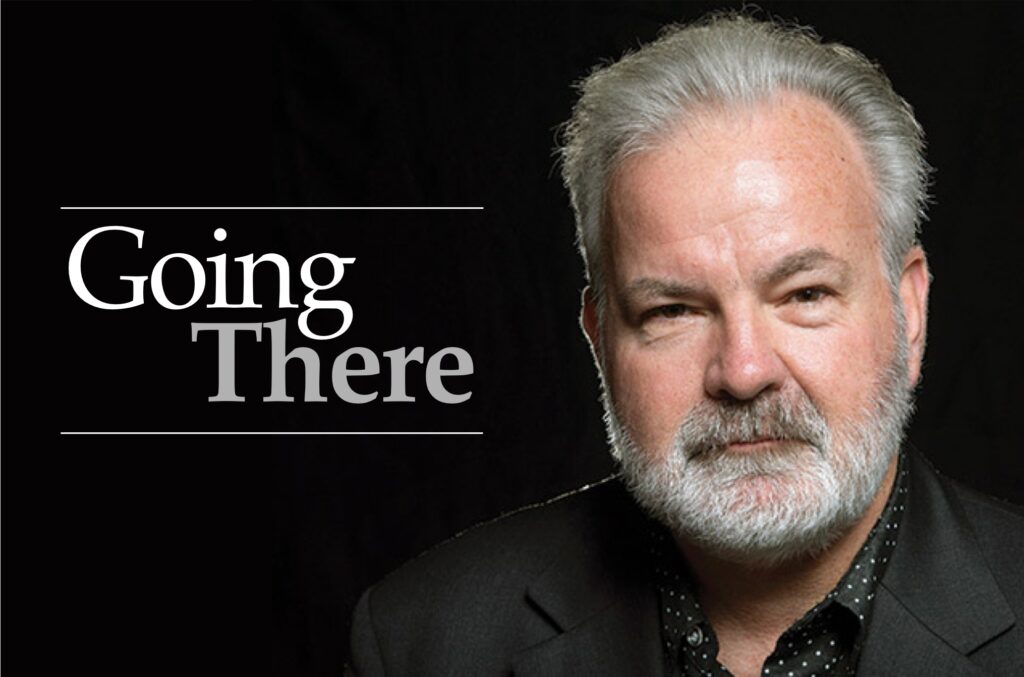Trans females in sports: we know what doesn’t work

by Mike Boos | Special to the Courier
The far-right base of the Republican Party is currently focusing its legislative energy on transgender youth and those who support and assist them on their difficult journey to becoming the gender of their true identity, rather than that assigned to them at birth.
Many states have, or are in the process of, passing laws that basically would deny transgender people the gender affirming care they require. According to Track Trans Legislation, in 2023 a whopping 45 states have proposed anti-trans bills.
One of many lines of attack has been on trans women competing in women’s sports. The argument against cites the recent example of record-breaking transgender swimmer from the University of Pennsylvania, Lia Thomas. She has been accused of having an unfair advantage in the women’s category.
According to NPR, a number of Republican governors in states including South Carolina, Oklahoma and Arizona have recently signed laws requiring transgender athletes in public schools to compete according to the sex listed on their birth certificates.
Those of us who remember transgender tennis player Renee Richards know this is not a new controversy. After sex change surgery she sued the United States Tennis Association to let her compete on the women’s tour and eventually won a court decision to allow her to play in 1977, which she did until 1981. Her highest ranking was 20th, and her best result was reaching the doubles final at the 1977 U.S. Open. After her retirement, she came to believe her past as a man gave her advantages over other female players.
This is a complicated issue. How do we maintain integrity and fairness in women’s sports while ensuring trans athletes’ right to participate? I am not a medical professional, but in a general sense I understand the kinds of physical advantages a trans female brings to competitive sports.
Until her graduation a year ago, my daughter competed as a nationally ranked division one collegiate distance runner. In elementary school she was faster than most everybody, including boys. But that changed in middle school when she began to trail the fastest boys. She was not getting slower: the boys were getting faster, and stronger. Several friends have asked about my daughter’s opinion on trans athletes in sports, so I talked to her about it.
She competed in dozens and dozens of competitions, including state and national championships, and only once did the issue come up, when she was a sophomore in high school. It did not involve a trans female but rather an athlete who was born a girl but was struggling with gender identity and wanted to cut his hair short, wear boys clothing, and use he/him pronouns. Tragically, he committed suicide.
It seemed to my daughter that suicide was a more likely scenario than having to compete against a trans female. She’d like to make sure the sport finds a way to include trans athletes. According to Pew Research, “About 5% of young adults in the U.S. say their gender is different from their sex assigned at birth.” Data from the National Institute of Health indicates 82% of transgender individuals have considered killing themselves and 40% have attempted suicide, with suicidality highest among transgender youth.
Last year the NCAA set rules requiring transgender athletes to undergo testosterone testing to compete in women’s divisions. Still, The New York Times reports “at least 20 states … have laws that bar transgender athletes from participating in sports corresponding with how they identify.” Those laws remain largely intact for now but considering the national implications, leaving the matter up to individual states is problematic.
I don’t know what the answer is, but it would seem we know what it is not: ostracization, humiliation, exclusion, denial of care, and laws based more on fear and hate than informed by scientific facts. As the high suicide rate would indicate, this is a much bigger problem than the rare case of a trans female in sports.
Mike Boos moved to Claremont with his wife Beth in 1990, where their two daughters were born and raised, and he attended Claremont Graduate University. He teaches music at University of La Verne.







0 Comments